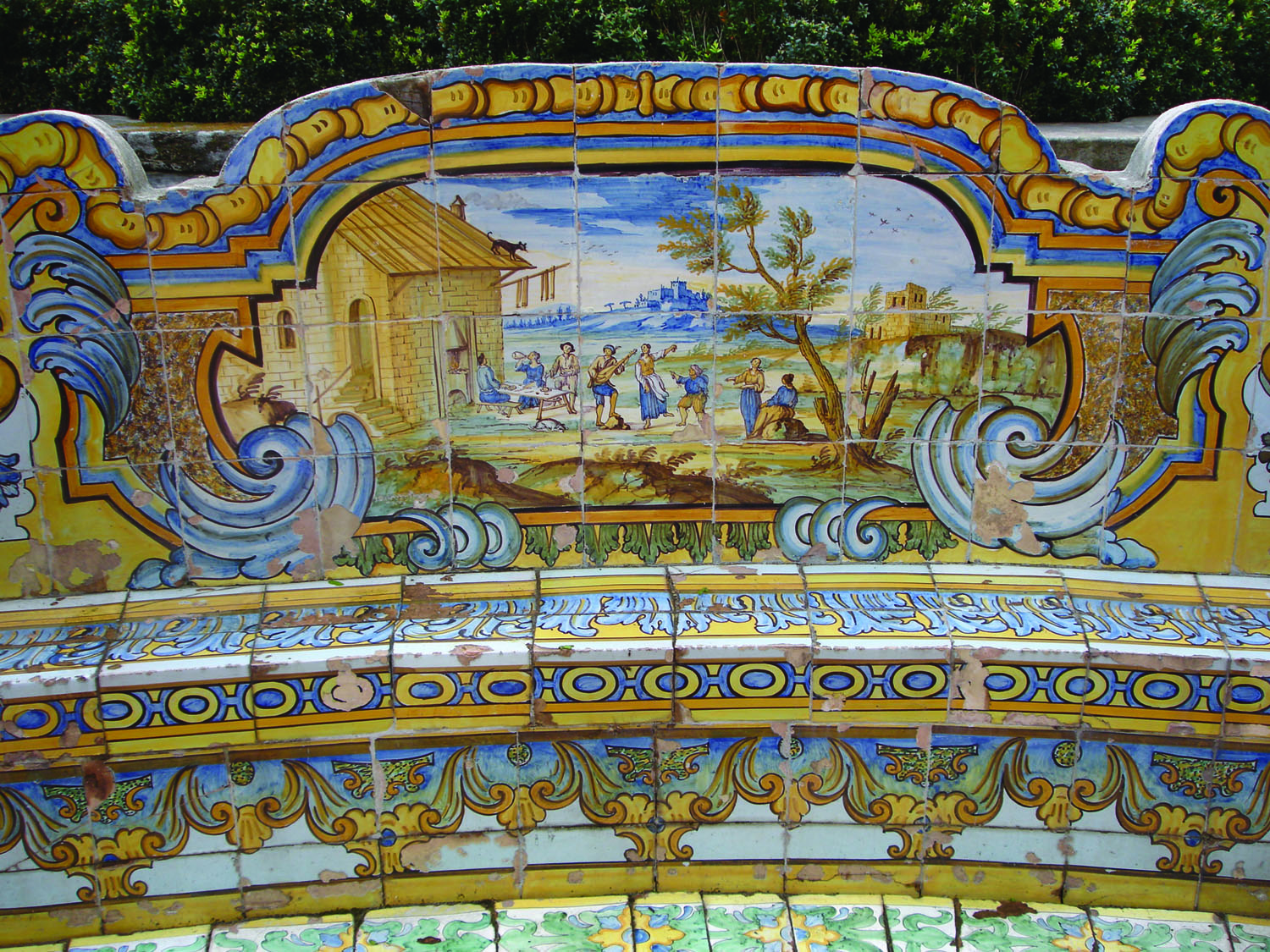It was not until 1924, when the nuns of Santa Chiara in Naples swapped digs with the monks, that outsiders were allowed to view these beautiful tin-glazed earthenware tiles, known in Italy as maiolica.
Music plays as men and women dance and flirt with each other, food and wine is quaffed with abandon; general merry-making in the sunshine. This is not the kind of scene that usually springs to mind when we imagine the lives of nuns, especially those who live in total isolation from the outside world. But here in the cloistered gardens at the Santa Chiara monastic complex in Naples, this is just the kind of imagery nuns gazed upon every day during their lives of silent contemplation. It is doubtful that this is quite what the abbess Ippolita Carmignani envisaged in 1739 when she commissioned the flamboyant landscape architect Domenico Antonio Vaccaro to create a cloister garden for the nuns. But in Naples, where music and sunshine abound, even a serious place like this could not escape at least a glimpse of la dolce vita. Yet for nearly two centuries, ordinary people could only imagine what fabled beauty lay behind these walls.
Image © J Palmer

